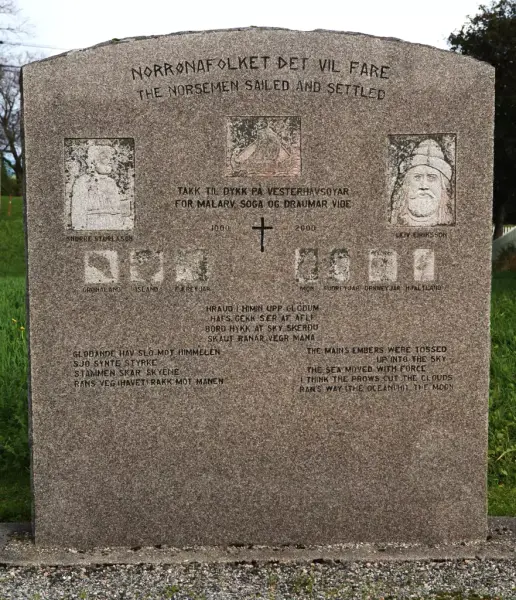- 1/1
Norwegian emigration to islands such as Iceland, Greenland, the Faroe Islands, Shetland, Orkney, the Hebrides and Man has been a central part of Nordic history. In Norse times, these islands were for several centuries the destination for Norwegian emigrants, who in turn have left a lasting mark on the culture and society in these regions. The Norwegians brought with them language, culture and traditions that formed the basis of today's society.
The mains embers were tossed
Up into the sky
The sea moved with force
I think the prows cut the clouds
Rans way(the ocean) hit the moon
Freedom-loving Norwegians set out on voyages over open seas, and new Norse communities were founded and grew to prosperity; in Iceland, Greenland, the Faroe Islands, Hjaltland (Shetland), Orkney, the Southern Islands (Hebrides) and Man. We find traces of the Norwegian emigrants in several of these communities today.
In the Viking Age, many people migrated from Norway and they settled down and formed new communities both in Normandy, Northern England and Ireland. They spoke Norwegian there for several generations, but as time has passed the language has disappeared.
The small island communities in the North Atlantic, on the other hand, became language colonies with a long and independent life. Those with knowledge about Icelandic, Faroese and Norwegian know that these languages are related, or that they have certain similarities. At the time the Norwegians moved to islands in the western sea, the language was probably fairly similar over the entire area, but after a number of generations the development naturally went in different directions. Each community developed its own characteristics, depending on how much contact there was between the communities.
There was a large trading relationship between Norway and the island communities in the North Atlantic, and the norwegian traders spent longer periods on the islands. In the same way, traders from Iceland and the Faroe Islands made frequent visits to Norway, and travels, relocations and marriages meant that the language was kept alive and worked "both ways".
The Norse monument was unveiled at the Emigration Festival in 2000. The monument was erected together with the Vestmannalaget as a memory of the many emigrants who went west.
